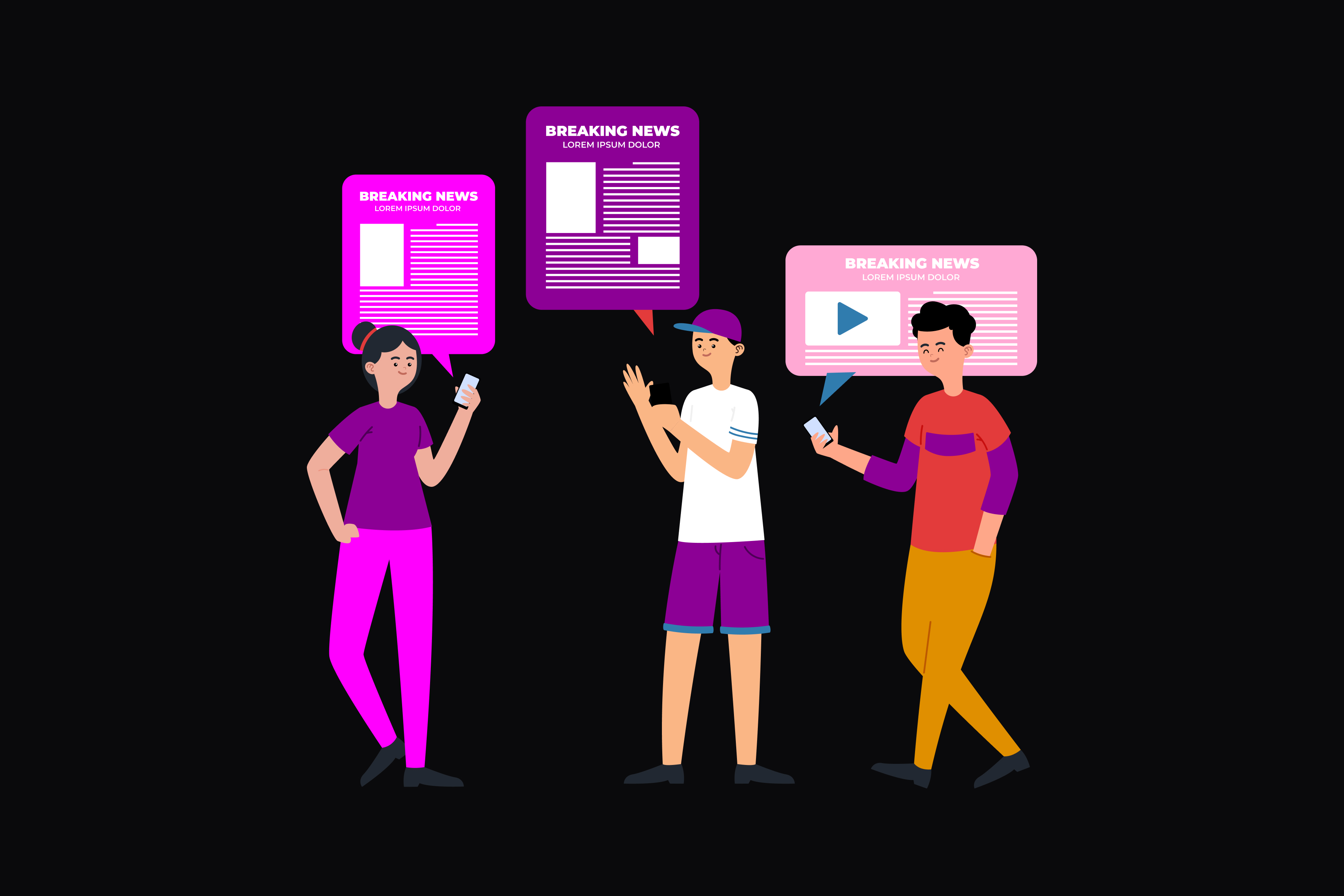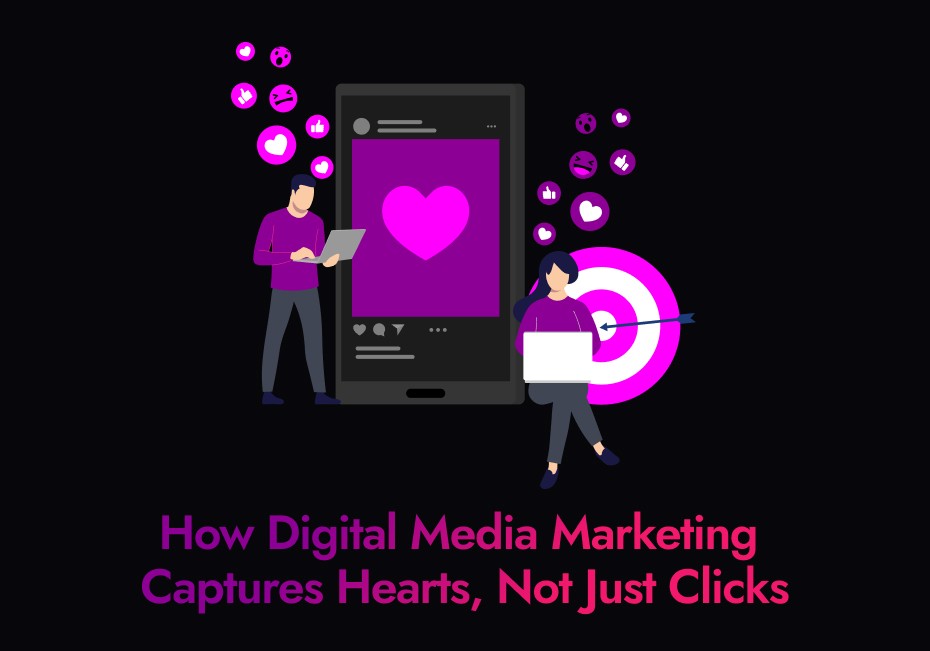Simply having an online presence isn’t enough. Digital Media Marketing must engage hearts, not just eyes. When brands weave stories into their strategy, rather than just broadcasting messages, they spark real connections. A well-told story can transform a faceless brand into something people trust, relate to, and stay loyal toward.
In this article, you’ll learn how to use storytelling in digital media marketing to build meaningful relationships with your audience and how to go beyond one-off campaigns to lasting brand affinity. We’ll explain different techniques, emotional branding, and strategies to apply storytelling throughout your marketing. Plus, you’ll see how Prismatic Digital Solution can support you.
Why Storytelling Matters in Digital Media Marketing
Before diving into tactics, let’s understand why storytelling is powerful in the realm of Digital Media Marketing:
Humans connect through stories more than through facts or stats. Stories evoke emotion, tap into memory, and make content memorable.
In the age of content marketing, audiences are bombarded with messages. A compelling narrative helps break through the noise.
Digital media marketing relies heavily on engagement, likes, comments, shares, click-throughs , and stories inspire more of these actions than dry promotional content.
Storytelling helps a brand feel more human, more relatable, enhancing emotional branding.
So, storytelling in digital marketing isn’t a gimmick; it’s a deeply human tool to make content resonate.
What Makes a Good Brand Story?
For online presence, you need to create engine stories, you need to understand the core pillar of creating engaging story.
Authenticity
People can sense when you’re not being real. Authentic storytelling means sharing real behind-the-scenes details, values, struggles, and successes, not just polished PR.
A clear narrative arc
Every good story has a beginning (setup), middle (conflict/challenge), and end (resolution). Even short formats, tweets, reels, and ad copy, benefit from this arc.
Emotional resonance
Tap into common human emotions: joy, fear, hope, belonging, surprise. Emotional branding hinges on stirring feelings so your audience feels, not just thinks.
Relatable characters
These could be customers, team members, or even the brand itself. But the more your audience sees themselves in the story, the better.
Conflict or challenge + transformation
A brand story is rarely just “everything is perfect.” Show the problem, the struggle, and how things improved (or will improve). That journey is what people root for.
Consistency across channels
Whether on Instagram, email, blog, or YouTube, your tone, style, and message should feel coherent. That builds brand storytelling techniques that reinforce identity.
Digital Storytelling Strategies You Can Use Today
Here are practical strategies to integrate narrative into your digital media marketing:
1. Customer Success Stories & Case Studies
These are classic, but for good reason. Let your happy customers tell their journey, where they were before, what obstacles they faced, how your product/service helped, and where they are now. Add visuals, quotes, or short video clips. This is a powerful storytelling format for content marketing.
2. Behind-the-Scenes / Founder Story
People love seeing how things are made or who is behind a brand. Show your team, your workplace, how you work, and even the mistakes you’ve made. It builds trust and makes your brand feel more real one of the best ways to tell a powerful brand story.
3. Micro-Stories on Social Media
Platforms like Instagram, TikTok, or LinkedIn favor short, punchy stories. Use Instagram Stories, Reels, or short videos to tell micro-narratives: “This week in our office,” “A challenge we solved,” “A customer message that moved us.” This is storytelling for social media in bite-sized form.
4. Episodic / Serialized Content
Break a bigger narrative into smaller installments. Maybe your brand is working on a big initiative, product launch, or community project. Share it as a series, Episode 1, 2, 3, to keep audiences coming back.
5. Visual Storytelling
Use photos, infographics, illustrations, or short video snippets to visually narrate your message. Visual storytelling in marketing reduces reliance purely on text and appeals to how many people prefer to consume content.
6. Interactive Storytelling
Quizzes, polls, choose-your-own-adventure posts, or user-submitted stories make the audience part of the narrative. This is a deeper stamp of customer engagement through storytelling.
7. Narrative in Advertising
Instead of just promoting a feature, build your ad copy or video around a story. “Meet Sarah, whose evenings were chaotic until she found, you get the idea. Even short display ads can hint at a narrative.
How Storytelling Builds Trust, Engagement & Loyalty
Storytelling in Digital Media Marketing does more than look pretty. Here’s how it fuels relationships:
- It breeds emotional connection. People don’t buy what you do, they buy why you do it. A story lets you show your “why.”
- It encourages sharing. Stories that resonate get shared organically, amplifying your reach.
- It deepens engagement. Rather than passively viewing, audiences comment, talk back, or feel seen.
- It nurtures brand loyalty. When people feel seen, understood, and part of your narrative, they stick around. Over time, this leads to advocacy.
- It differentiates you. In markets full of similar features and specs, your story , your way of seeing the world , becomes your unique selling point.
So, building brand loyalty is less about promising “better features” and more about weaving a consistent, human story over time.
How to Bring Storytelling into Your Marketing Step by Step
Here’s a step-by-step way to add storytelling to your digital media marketing:
Step 1: Define Your Core Brand Narrative
Ask yourself: What’s the main story behind your brand? What values, goals, and message deliver to your audience? This story will guide everything you do like your brand’s compass. For example: “We began as two friends fixing bikes in a garage, and today we help people get back on the road with affordable parts.
Step 2: Choose Your Story Themes
Break your main story into smaller themes you can use again and again. For example:
- Overcoming challenges
- Customer success stories
- New ideas and progress
- Living your values (like sustainability)
- Community and mission
Step 3: Match Themes to Platforms and Audiences
Decide which story fits best on which platform. A long blog post works well for detailed stories, while Instagram Stories are perfect for short behind-the-scenes moments. Use content marketing storytelling that suits each platform and audience.
Step 4: Create a Content Calendar with Stories
Don’t just schedule posts , schedule narratives. Plan “episodes,” follow-ups, and arcs. For example, this month focus on “customer journey stories,” next month on “product-development journey.
Step 5: Use Multimedia
Combine text, imagery, audio, and video to build narrative marketing richness. A blog post can have embedded videos, image carousel, or audio snippets from your team or customers.
Step 6: Invite Participation
Ask your customers to share their stories. Host contests, ask for testimonials, and re-share user-generated content. This fosters customer engagement through storytelling.
Step 7: Measure & Iterate
Like any Digital Media Marketing strategy, track metrics: time on page, shares, comments, conversion rates tied to story-driven campaigns. See which narratives resonate best, and refine.
Tips & Best Practices for Effective Storytelling in Digital Media Marketing
Keep the audience in focus. Don’t just talk about yourself, how do your stories relate to your audience’s life, aspirations, or struggles?
Avoid being too self-promotional. The story shouldn’t feel like a billboard; it should feel like a conversation.
Use vivid details. The smell of fresh paint, the creak of a door, sensory elements bring stories alive.
Keep consistency. Your brand voice, tone, and visual style must stay coherent across stories and platforms.
Be prepared to adapt. The Digital Media Marketing world changes; experiment with formats (video, podcast, memes) and see what your audience digests best.
Don’t overcomplicate. A simple, clear narrative often carries more weight than something convoluted.
Respect authenticity. Never fabricate or exaggerate just for effect. That erodes trust.
Balance frequency and depth. You don’t need a story every post, sometimes a quick tip or visual is enough, but structural storytelling should run through your core campaigns
Example Use-Cases of Storytelling in Digital Media Marketing
Brand A (Fitness Apparel) posts a week-long series: “From Day 0 to Marathon Finish.” They start with how their founder couldn’t run 1 km, then chronicles training, setbacks, gear testing, and finally crossing a finish line, showcasing both human and product journey.
Brand B (Eco-friendly Home Goods) shares a behind-the-scenes video of their packaging process, showing tree planting, material sourcing, and worker interviews. This highlights values and sustainability in an emotional branding frame.
Brand C (Software Startup) lets customers tell short video clips of how their tool changed workflows. These micro-stories are used across social media, email, and paid ads, a cohesive brand storytelling technique.
How Prismatic Digital Solution Can Illuminate Your Brand’s Story
At Prismatic Digital Solution, We believe every brand has a unique story to share and we know how to bring it to life online. Here’s how we can support:
- Story-driven content strategy & planning, We help you define your core narrative, develop story themes, and build a calendar built around narrative arcs.
- Multimedia content creation, From writing to visual assets to video and interactive storytelling, we create content that resonates.
- Channel optimization & distribution, We adapt each story to the ideal channel (blogs, social media, email, video), ensuring maximum reach and engagement.
- Campaigns built on narrative marketing, Our team can execute story-based campaigns that build affinity, not just clicks.
- Analytics & iteration, We monitor performance, see which stories connect, and continuously refine your storytelling approach.
Let us partner with you to leverage storytelling in digital media marketing so you don’t just speak , you connect. Reach out, and we’ll craft your brand narrative together.
FAQs
Q1: What is storytelling in digital marketing, and how is it different from regular content?
Storytelling in digital marketing means structuring content with narrative elements, characters, conflict, resolution, emotion, rather than just listing features or announcements. It aims to forge connection and memory, rather than merely delivering information.
Q2: How often should a brand use storytelling in its digital media marketing?
Not every post needs to be a full story. But at the heart of your content calendar, narrative threads should run through campaigns, pillars, and flagship content. Use stories in hero content, series, customer spotlight, and campaign anchors.
Q3: Can small businesses benefit from brand storytelling?
Absolutely. In fact, small brands often have more authentic stories (startup struggles, founder journey). That honesty can help small businesses punch above their weight in building brand loyalty.
Q4: What metrics can show whether storytelling works?
Look at engagement metrics (likes, comments, shares), time on page, click-through or conversion rates for story-driven campaigns, repeat visits, customer retention rates, and brand sentiment or feedback.
Q5: How do visuals and videos help in storytelling?
Visuals and video activate senses, emotions, and immediacy. Visual storytelling in marketing can show mood, setting, and context in seconds that text alone can’t. Pair images with narrative captions or voiceovers for deeper impact.
Q6: How do I maintain authenticity in storytelling?
Stay grounded in your real values, challenges, and outcomes. Share both wins and lessons. Use real people (team or customers) and avoid exaggeration. Feedback helps, listen when your audience reacts, and adjust.



 Chat with Prismatic Bot
Chat with Prismatic Bot